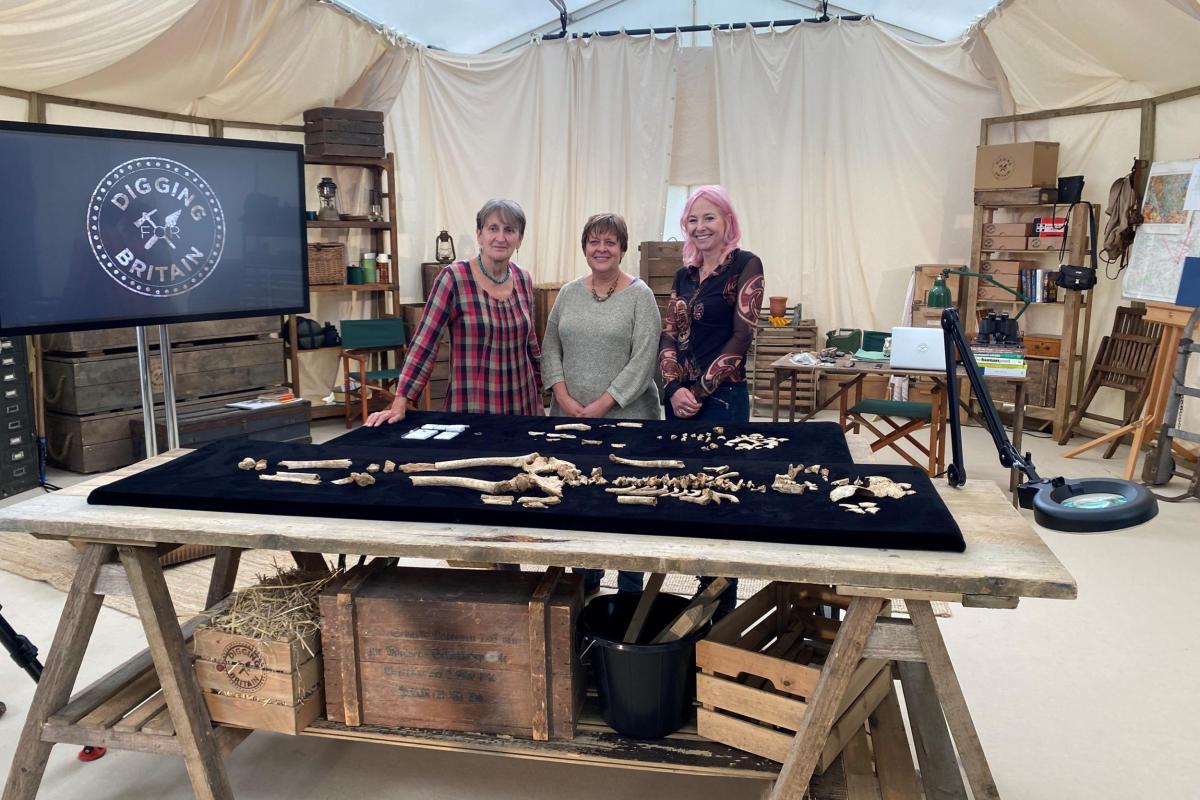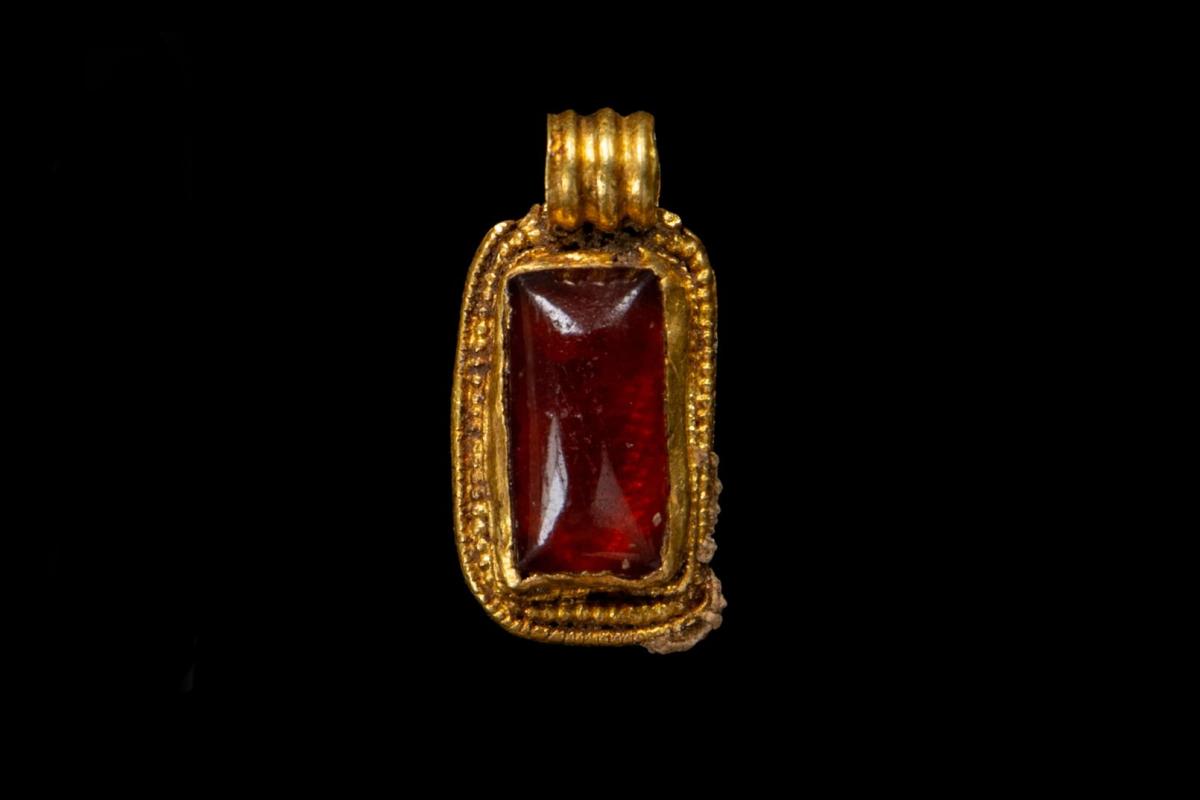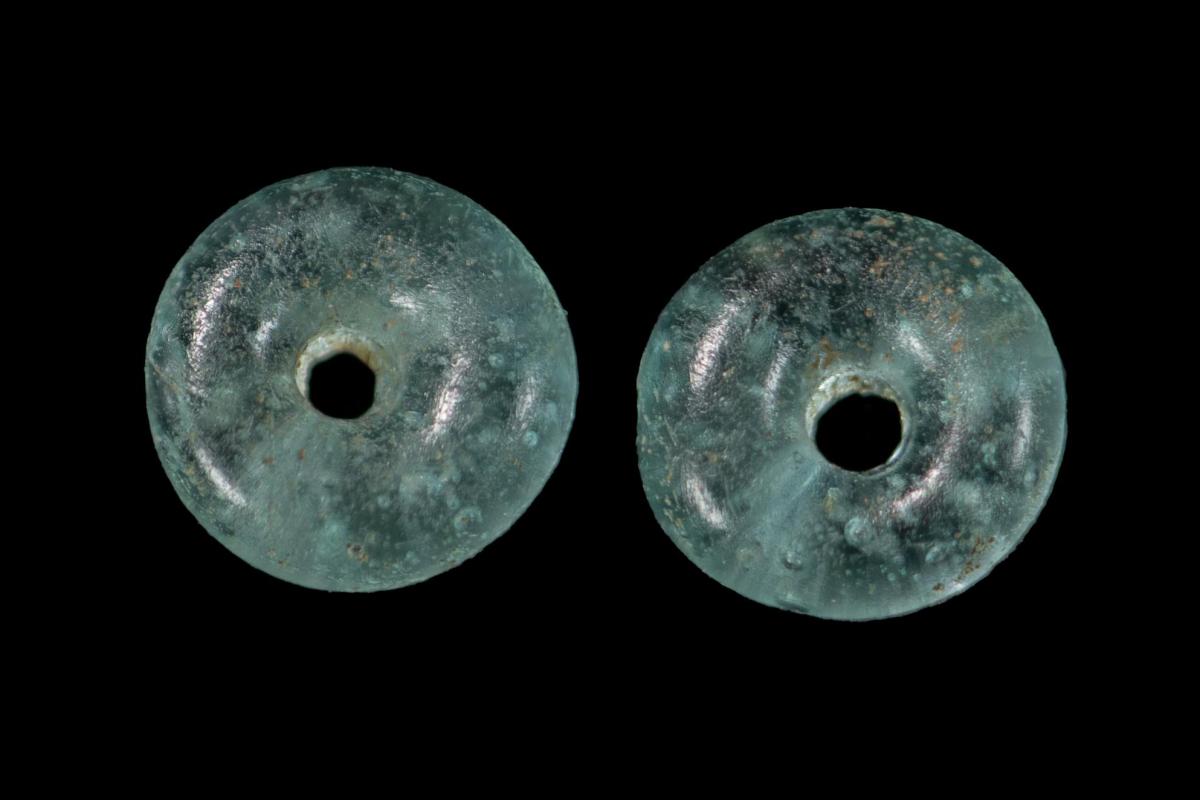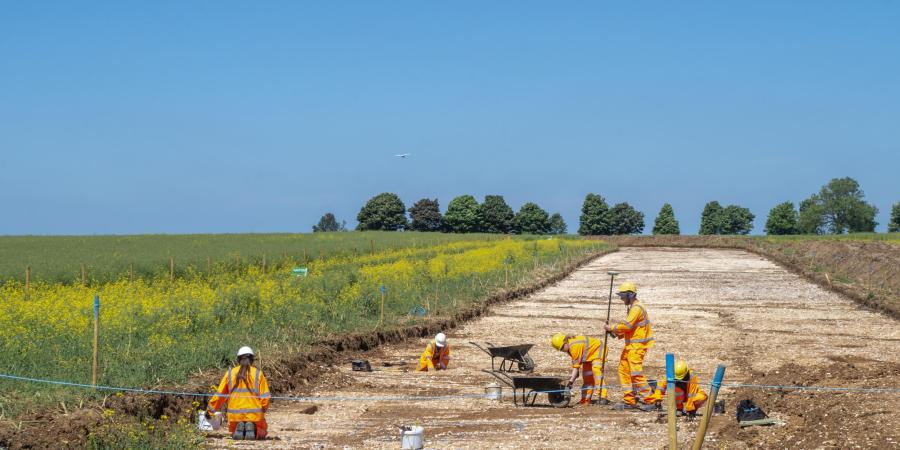Archaeological discoveries from an Anglo-Saxon cemetery excavated for National Grid’s Viking Link project - the world’s longest land and subsea interconnector sharing energy with the continent - feature in BBC’s Digging for Britain this January.
Since 2020, 50 archaeological sites have been dug along the onshore cable route. The wealth of evidence recovered is shedding light on life across rural south-east Lincolnshire from prehistory to the present day, with highlights including a Bronze Age barrow and a Romano-British farmstead. The most striking discovery, however, is the remains of an Anglo-Saxon cemetery, which features in the BBC series.
Peter Bryant led the project for Viking Link. He said: “I really enjoyed being part of the project. It was surprising how many artefacts we found across the route - the gold Anglo-Saxon pendant from the burial ground was a highlight as was the outreach with the local communities to share what we found. It has been very interesting and exciting to help unearth the hidden treasures that have lain dormant for hundreds of years, in such a careful way. It was a pleasure working with Wessex Archaeology on this journey through time."

Professor Alice Roberts with osteologists Jacqueline McKinley and Ceri Boston from Wessex Archaeology in the Digging for Britain tent with two Anglo-Saxon burials found during excavations for Viking Link © Wessex Archaeology.
The burials in the cemetery deliberately focus on an earlier Bronze Age ring ditch and indicate the funerary landscape was long established. Archaeologists uncovered the buried remains of over 20 people alongside a range of grave goods including knives, jewellery and pottery vessels. From these 250 artefacts, experts know the cemetery dates to the 6th and 7th centuries AD.
Among the burials was that of a teenage girl and a child. Both lay on their sides with the child tucked in behind the older girl. Two small gold pendants set with garnets and a delicate silver pendant with an amber mount were recovered from around the teenager’s head or chest, together with two small blue glass beads and an annular brooch.
Jacqueline McKinley, Principal Osteoarchaeologist, Wessex Archaeology, said: “Although many Anglo-Saxon cemeteries are known in Lincolnshire, most were excavated decades ago when the focus was on the grave goods, not the people buried there. Excitingly, here we can employ various scientific advancements, including isotopic and DNA analyses. This will give us a far better understanding of the population, from their mobility to their genetic background and even their diet.”


Left: Anglo-Saxon gold pendant with garnet centre. Right: Doughnut shaped translucent light turquoise glass beads. Both © Wessex Archaeology.
The relationship between the child and the teenager is not yet known but research and analysis are ongoing and will include isotope and Ancient DNA analysis of these and other skeletal remains. This will help to identify familial relationships and broader genetic links both within this community and between others in the region, and the movement of people in wider society.
Specialists are also looking at the artefacts and the layout of the cemetery to learn about the economic, cultural and social factors affecting this community, including the import of exotic goods and the health of those buried within different parts of the cemetery.
As this research unfolds, we hope to greatly extend our understanding of Anglo-Saxon life and death in the region.
A Roman Mystery and Waterloo’s Disappearing Dead
Digging for Britain, BBC Two
8pm, Tuesday 9th January 2024
Also available on iPlayer
https://www.bbc.co.uk/programmes/m001ttqr
For more information please get in touch at press@wessexarch.co.uk.
